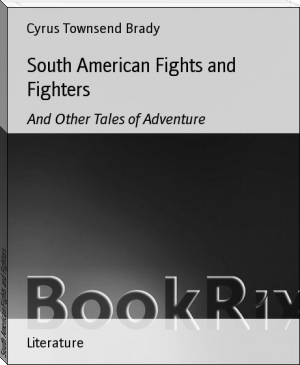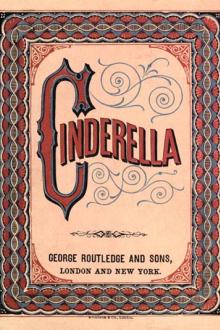South American Fights and Fighters, and Other Tales of Adventure by Brady (rosie project .txt) 📕

Read free book «South American Fights and Fighters, and Other Tales of Adventure by Brady (rosie project .txt) 📕» - read online or download for free at americanlibrarybooks.com
- Author: Brady
Read book online «South American Fights and Fighters, and Other Tales of Adventure by Brady (rosie project .txt) 📕». Author - Brady
On Christmas day, 1520, Cortes took up the march over the mountains again for the great city of the cactus rock.
{194} XII. The Siege and Destruction of Mexico
It was April of the next year when Cortes at last arrived before the city and began the siege. The force which he had mustered for this tremendous undertaking consisted of seven hundred Spanish infantry, one hundred and twenty arquebuses, eighty-six horsemen, twelve cannon, and a countless multitude of Tlascalan fighters together with numbers of slaves and servants.
As the city was connected with the mainland by three causeways, it was necessary to invest it on three sides. The army was divided into three equal divisions. He himself commanded the force that was to attack along the south causeway; with him was Sandoval, his most trusted and efficient lieutenant; Alvarado led that which was to advance over the west causeway and Olid was to close the north causeway. The brigantines were brought over the mountains by hand by thousands of Tlascalans. There were no vehicles or highways of any sort in Mexico; the Mexicans not having domesticated any animals there was no use for anything broader than a foot-path, a fact which throws an interesting side-light on their civilization, by the way. These Spanish boats were put together on the shores of the lake and when they were launched they served to close the ring of steel which surrounded the doomed city.
The three great tribal divisions of the Aztec empire were the Aztecs themselves, the Cholulans and the Tezcocans. Cholula had been conquered and with Tezcoco at this critical juncture went over to the Spaniards, leaving Guatemoc and his Aztecs to fight the last fight {195} alone. Besides the forces enumerated, each Spanish division was accompanied by formidable bodies of Tlascalans. The Tlascalans were nearly, if not quite, as good fighters as the Aztecs; perhaps they were better fighters, so far as their numbers went, when led and supported by the white people.
The first thing that Cortes did was to cut the aqueduct which carried fresh water into the city. The lake of Tezcoco in which Mexico stood was salt. By this one stroke, Cortes forced the inhabitants to depend upon a very meagre, scanty supply of water from wells in the city, many of which were brackish and unpalatable. The shores of the lake were swept bare by the beleaguerers. Iztatapalan, a rocky fortress was taken by storm and on April 21, 1521, the first attack was delivered along the causeways. The Mexicans met the advance with their customary intrepidity. The water on either side of the causeway swarmed with canoes. Thousands of warriors poured out of the city. The canoes swept down the lake intending to take the Spaniards in reverse and then pour in a terrible flank fire of missiles as they had done on the Melancholy Night. Cortes sustained this fire for a short time in order to draw the canoes as far toward him as possible, then he let loose the brigantines.
These brigantines were boats propelled by oars and sails on a single mast. They carried about a score of armed men and were very well and stoutly built. I suppose them to have been something like a modern man-o'-war cutter. They played havoc with the frail canoes. Their solid construction, their higher free-board, that is, the height they were above the water-line, the armor of their crews and the fact that the wind happened to be favorable and they {196} could sail instead of row that morning, all contributed to the utter and complete destruction of the Indian flotilla. Canoes were splintered and sunk. Men were killed by the hundreds. They strove to climb up the slippery sides of the causeways and dykes. The Spaniards thrust them off into the deep water with their spears or cut them to pieces with their swords. The battle along the causeways, which were narrow, although quite wide enough for a dozen horsemen abreast, was terrible. The Aztecs literally died in their tracks, disdaining to fly. The Spaniards made their way over a floor of dead and writhing bodies.
Bare breasts, however resolute the hearts that beat beneath them, were no match for the steel cuirasses. The wooden shields did not even blunt the edge of the Toledo blade; the obsidian battle-axes could not contest with the iron maces. The jewelled feather work of the proudest noble was not equal even to the steel-trimmed leather jerkin of the poorest white soldier. The Spaniards literally cut their way, hewed, hacked, thrust their way into the city.
Here the fighting was slightly more equalized. The low roofs of the houses and pueblos swarmed with warriors. They rained missiles down upon the Spaniards' heads, while a never diminishing mob hurled itself into the faces of the white men. The Aztecs could have done more damage if they had not sacrificed everything in order to capture the Spaniards alive. In some instances they succeeded in their purpose. The fighting which was the same in all three of the causeways lasted all day and then the Spaniards retired to their several camps.
Save for the fact that they afterward cleared the lake of the canoes by the aid of the brigantines, one {197} day's fighting was like another. The Spaniards would march into the city, slaughter until their arms were weary. They would lose a few here and there every day. The Tlascalans who took their part in all the fighting lost many. The end of the day would see things in statu quo. There were enough of the Indians even to sacrifice one hundred of them to one Spaniard and still maintain the balance of power. Cortes observed that he might fight this way until all of his army had melted away by piecemeal and have taken nothing.
He determined upon the dreadful expedient of destroying the city as he captured it. After coming to this decision, he summoned to his aid large bodies of the subject tribes. Thereafter, while the Spaniards and the Tlascalans fought, the others tore down that portion of the city which had been taken. The buildings were absolutely razed to the ground and nothing whatever was left of them. Canals were filled, gardens were ruined, trees cut down and even the walls of the city torn apart. In short, what once had been a teeming populous quarter of the city, abounding in parks, gardens and palaces, was left a desert. There was not enough power left in the Aztec Confederacy to rebuild the devastated portions over night and the Spaniards daily pressed their attack on every side with relentless rigor.
The Mexicans were slowly constricted to an ever narrowing circle. The Spaniards seized and choked up the wells. The Mexicans were dying of thirst. The brigantines swept the lake and prevented any re�nforcements reaching them, which cut off their supply of provisions. They were dying of hunger. After every day's fighting Cortes offered amnesty. To do {198} him justice, he begged that peace might be made and the fighting stopped before the city was ruined and all its inhabitants were killed. He was no mere murderer, and such scenes of slaughter horrified him. He had a genuine admiration for the enemy too. He tried his best to secure peace. His offers were repudiated with contempt. In spite of the fact that they were starving, the Aztecs in bravado actually threw provisions in the faces of the advancing Spaniards. They declared to the Tlascalans that when there was nothing left to eat they would eat them, and if there was nothing else, they would live on one another until they were all dead. They mocked and jeered at the tribes tearing down the houses, and with grim humor pointed out to them that they would have to rebuild the city whoever was successful in the strife, for either the Aztecs or the Spaniards would compel them to do so. So the fighting went on through the long days.
XIII. A Day of Desperate Fighting
On one occasion the soldiers, tiring of this, demanded, and Cortes in compliance with their wishes projected, an attack which was hoped would capture the narrow circle of defense by storm. In his own words the story of this day's fighting is now related. It will be seen how he narrowly escaped with his life:
"The day after mass,[10] in pursuance of the arrangements already mentioned, the seven brigantines with more than three thousand canoes of our allies left the encampment; and I, with twenty-five horses and {199} all the other force I had, including the seventy-five men from the division at Tacuba, took up the line of march and entered the city, where I distributed the troops in the following manner: There were three streets leading from where we entered to the market-place, called by the Indians Tianguizco, and the whole square in which it is situated is called Tlaltelulco; one of these streets was the principal avenue to the marketplace, which I ordered your Majesty's treasurer and auditor to take, with seventy men and more than fifteen or twenty thousand of our allies, and rear-guard consisting of seven or eight horses. I also directed that, whenever a bridge or entrenchment was taken, it should be immediately filled up; and for this purpose they had twelve men with pick-axes, together with many more of our allies who were very useful in this kind of work. The two other streets also lead from that of Tacuba to the market-place, and are narrower and full of causeways, bridges, and water-streets (or canals). I ordered two captains,[11] to take the wildest of these with eighty men and more than ten thousand of our Indian allies; and at the head of the street of Tacuba I placed two heavy cannon with eight horse to guard them. With eight other horse and about one hundred foot, including twenty-five or more bowmen and musketeers, and an innumerable host of our allies, I took up the line of march along the other narrow street, intending to penetrate as far as possible. At its entrance I caused the cavalry to halt, and ordered them by no means to pass from there, nor to come in my rear, unless I first sent them orders to that effect; and then I alighted from my {200} horse, and we came to an entrenchment that had been raised in front of a bridge, which we carried by means of a small field-piece, and the archers and musketeers, and then proceeded along the causeway, which was broken in two or three places, where we encountered the enemy. So great was the number of our allies, who ascended the terraces and other places, that it did not appear possible anything could stop us. When we had gained the two bridges, the entrenchments and the causeways, our allies followed along the street without taking any spoils; and I remained behind with about twenty Spanish soldiers on a little island, for I saw that some of our Indians were getting into trouble with the enemy; and in some instances they retreated until they cast themselves into the water, and with our aid were enabled to return to the attack. Besides this, we were on the watch to prevent the enemy from sallying forth out of the cross-streets in the rear of the Spaniards, who had advanced on the main street and at this time sent us word that they had made much progress, and were not far from the great square of the market-place; adding, that they wished to push forward, for they already heard the noise of the combat in which the Alguazil mayor and Pedro de Alvarado were engaged on their side of the city. I answered them that they must by no means go forward without leaving the bridges well filled up, so that, if it became necessary to beat a retreat, the water might present no obstacle or impediment, for in this consisted all the danger. They sent to me a





Comments (0)